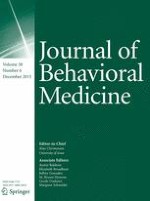05-08-2015
Social-cognitive factors mediating intervention effects on handwashing: a longitudinal study
Gepubliceerd in: Journal of Behavioral Medicine | Uitgave 6/2015
Log in om toegang te krijgenAbstract
Handwashing with soap effectively prevents diarrhoea, a leading cause of death in infants. Theory-based interventions are expected to promote handwashing more successfully than standard approaches. The present article investigates the underlying change processes of theory-based handwashing interventions. A nonrandomised field study compared a standard approach to two theory-based interventions that were tailored to the target population, the inhabitants of four villages in southern Ethiopia (N = 408). Data were collected before and after interventions by structured interviews and analysed by mediation analysis. In comparison to the standard approach (i.e., education only), education with public commitment and reminder was slightly more effective in changing social-cognitive factors and handwashing. Education with an infrastructure promotion and reminder was most effective in promoting handwashing through enhancing social-cognitive factors. The results confirm the relevance of testing interventions’ underlying change processes.
